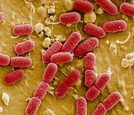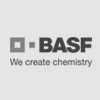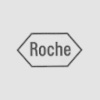E. coli IMS Bead Reagents
Escherichia coli (E. coli) is a common bacterium that can be found in human and animal digestive systems where it is present in large numbers. There are hundreds of E. coli strains and most are relatively harmless, causing illnesses such as traveler’s diarrhea only when consumed in exceedingly high numbers. A notorious exception is E. coli strain 0157:H7, a pathogen that produces a powerful toxin and can cause severe illness (bloody diarrhea, kidney damage, and occasionally death). E. coli O157:H7 was first recognized as a cause of illness during an outbreak in 1982 traced to contaminated hamburgers. Since then, people have become sick after eating contaminated salad greens, drinking contaminated water, or swimming in water contaminated with E. coli 0157:H7.
While E. coli 0157:H7 is a potent pathogen, other strains of E. coli (O26, O45, O103, O111, O121, O145) can produce health hazards as well, especially when water or food quality (Forghani, et al.) is affected. The presence of E. coli in source water used for drinking as well as recreational waters (Bushon, et al.) is an indication of contamination from human and/or animal waste and the possible presence of disease-causing organisms. Along with E. coli, enterococci are also considered to be microbial indicators of fecal contamination and their assessment in environmental samples are very useful in the evaluation and management of recreational waters.
ImmunoMagnetic Separation or IMS is a technique that is now widely used for the specific and rapid isolation and identification of target organisms, including E. coli, from a wide range of complex samples, including but not limited to untreated or partially treated sewage and recreational waters and beaches. IMS permits the use of a fairly large sample volume, thus improving the chances of identifying the presence of small numbers of fecal-indicator bacteria from a given sample.
Virusys Corporation offers an IMS product line that can be adapted to assess both laboratory and environmental samples for the presence of E. coli, in particular, polyclonal rabbit antibodies against E. coli and paramagnetic beads coated with anti-rabbit antibodies. In addition, Virusys also provides a series of buffers and diluents (assay buffers, wash buffers, etc.) that can be combined with the antibodies and beads to assure both high sensitivity and specificity from a wide range of sample matrices.
Forghani F, Li S, Zhang S, Mann DA, Deng X, den Bakker HC, Diez-Gonzalez F. 2020. Salmonella enterica and Escherichia coli in wheat flour: detection and serotyping by a quasimetagenomic approach assisted by magnetic capture, multiple-displacement amplification, and real-time sequencing. Appl. Environ. Microbiol. 86 (13), 1-15.
Rebecca N. Bushon et al., Comparison of immunomagnetic separation/adenosine triphosphate rapid method to traditional culture-based method for E. coli and enterococci enumeration in wastewater, Water Research (2009), 43, 4940-4946.
The Detection Set contains 1 x 1 ml Luciferin-Luciferase concentrate and 2 x 1 ml Luciferin-Luciferase Diluent.
The Lysis Set contains 3 x 1.5 ml Somatic Cell Lysis Reagent and 1 x 1 ml Bacterial Lysis Reagent.

















